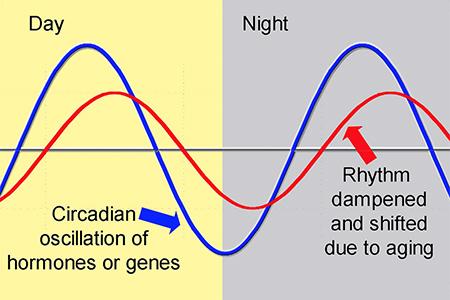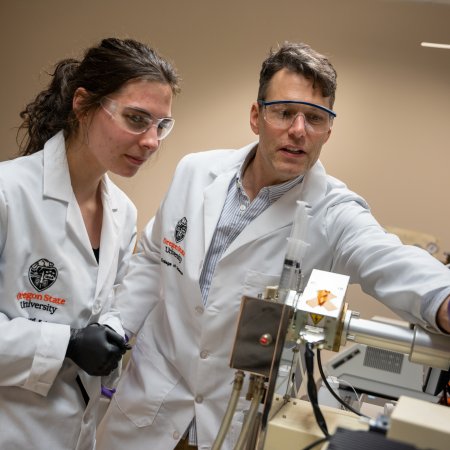Researchers have discovered the ability of a micronutrient called lipoic acid to restore a normal circadian rhythm (“biological clock”) in aging animals could explain its importance to many important biological functions, ranging from stress resistance to cardiac function, hormonal balance, muscle performance, glucose metabolism and the aging process.
The findings were made by biochemists from the Linus Pauling Institute at Oregon State University and published in the journal Biochemical and Biophysical Research Communications. The research was supported by the National Institutes of Health through the National Center for Complementary and Alternative Medicine.
Scientists around the world have increasingly focused their research on lipoic acid in recent years, uncovering previously unknown effects of this micronutrient. Lipoic acid appears to have many different and seemingly unrelated biological roles, unusual for a single compound.
“This could be a breakthrough in our understanding of why lipoic acid is so important and how it functions,” said Tory Hagen, the Helen P. Rumbel Professor for Healthy Aging Research in the Linus Pauling Institute and Professor of Biochemistry and Biophysics in the College of Science.
“Circadian rhythms are day-night cycles that affect the daily ebb and flow of critical biological processes,” Hagen said.
“The more we improve our understanding of them, the more we find them involved in so many aspects of life.
“Almost one third of all genes are influenced by circadian rhythms, and when out of balance they can play roles in cancer, heart disease, inflammation, hormonal balance and many other areas,” he said. “So if lipoic acid is one of the key micronutrients that help to synchronize our circadian rhythms, it could explain how one compound could affect so many areas of general health.”
A primary goal of research in the Linus Pauling Institute and OSU’s Center for Healthy Aging Research is to promote what scientists call “healthspan”: not just the ability to live a long life, but to have good health and normal activities during most of one’s life. Research on lipoic acid, at the University and elsewhere, supports this notion.





